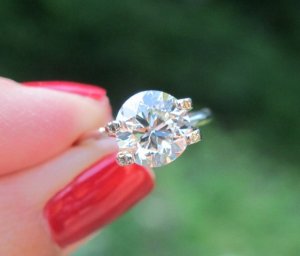two_little_birds
Brilliant_Rock
- Joined
- Oct 6, 2011
- Messages
- 1,319
https://loupetroop.com/listings/rings-natural-diamond-center/2-dot-61ct-transitional-cut-diamond-ags-j-si1;13107
AGS REPORT
http://www.agslab.com/reportTypes/pdqr.php?StoneID=104083004001&Weight=2.607&D=1
VIDEOS
https://www.youtube.com/watch?v=WZqjcS06nMI
https://www.youtube.com/watch?v=FU0F0BJVLUk
ADDITIONAL PHOTOS
https://www.dropbox.com/sh/2nvh6pqm5yt9ylk/AACyUAGWYCvKLcxGvM5zaokya?oref=e
Transitional Diamonds (From Jewels by Grace):
Around 1918 to the late 1920s, there was a new, undeniably beautiful, and absolutely fascinating diamond cut coming out of the United States. Born in the Boston workshop of Henry Morse, whose company had invented the steam powered bruting machine, the transitional cut was a new level of sophistication. Short lived, but incredibly important in cutting history, the transitional cut was a huge step towards modern technique.
Transitional cut diamonds, also known as Early American Cuts or Early Modern Cuts, are unlike any other. The transitional cut took the old European cut and evolved from it. A round cut, with a large table, low crown, small culet, and short pavillon, it’s definitely a classic beauty. Sound like a modern brilliant? Almost, but in transitionals the girdle lacks any faceting. When Henry Morse started working on this cut, it was one of the first time rough gems were consistently cut for beauty and not size. They weren’t afraid to cleave off a huge chunk of stone if it was going to make the diamond more beautiful and light reflective, which was pretty unheard of at the time. They strived for proportion, which was mathematically perfected by Tolkowsky, eventually resulting into our beloved brilliant cuts of today.
Transitional cuts are pretty rare today, but still just as shockingly gorgeous as there were when the first hit the market. They are mostly symmetrical and dazzling like modern cuts, with the aura and romance of an antique stone. A perfect compromise.

AGS REPORT
http://www.agslab.com/reportTypes/pdqr.php?StoneID=104083004001&Weight=2.607&D=1
VIDEOS
https://www.youtube.com/watch?v=WZqjcS06nMI
https://www.youtube.com/watch?v=FU0F0BJVLUk
ADDITIONAL PHOTOS
https://www.dropbox.com/sh/2nvh6pqm5yt9ylk/AACyUAGWYCvKLcxGvM5zaokya?oref=e
Transitional Diamonds (From Jewels by Grace):
Around 1918 to the late 1920s, there was a new, undeniably beautiful, and absolutely fascinating diamond cut coming out of the United States. Born in the Boston workshop of Henry Morse, whose company had invented the steam powered bruting machine, the transitional cut was a new level of sophistication. Short lived, but incredibly important in cutting history, the transitional cut was a huge step towards modern technique.
Transitional cut diamonds, also known as Early American Cuts or Early Modern Cuts, are unlike any other. The transitional cut took the old European cut and evolved from it. A round cut, with a large table, low crown, small culet, and short pavillon, it’s definitely a classic beauty. Sound like a modern brilliant? Almost, but in transitionals the girdle lacks any faceting. When Henry Morse started working on this cut, it was one of the first time rough gems were consistently cut for beauty and not size. They weren’t afraid to cleave off a huge chunk of stone if it was going to make the diamond more beautiful and light reflective, which was pretty unheard of at the time. They strived for proportion, which was mathematically perfected by Tolkowsky, eventually resulting into our beloved brilliant cuts of today.
Transitional cuts are pretty rare today, but still just as shockingly gorgeous as there were when the first hit the market. They are mostly symmetrical and dazzling like modern cuts, with the aura and romance of an antique stone. A perfect compromise.




300x240.png)